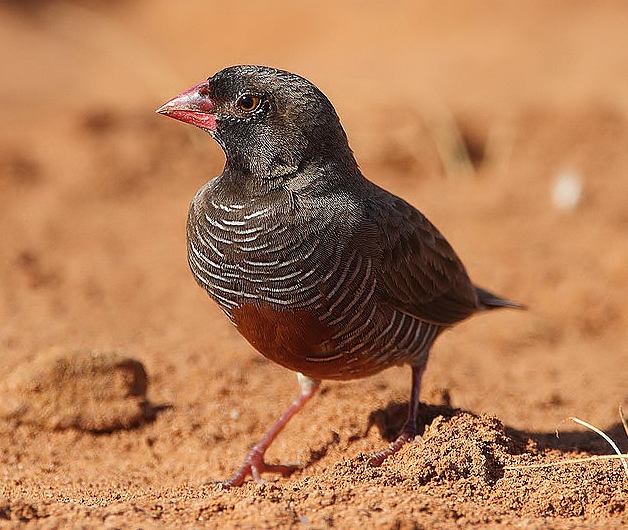 |
| Photo by Steve Garvie (Wikipedia) |
Common name:
quailfinch (en); bico-de-lacre-codorniz (pt); astrild-caille à face noir (fr); pinzón codorniz (es); wachtelastrild (de)
Taxonomy:
Order Passeriformes
Family Estrildidae
Range:
This species is patchily distributed across sub-Saharan Africa, from Mauritania to Ethiopia and south to South Africa.
Size:
These birds are 9-10 cm long and weigh around 11 g.
Habitat:
The quailfinch is found in short, open grasslands, marshes, bogs, agricultural fields and open woodlands, especially near water sources.
Diet:
They forage on the ground, mainly eating grass seeds, but also taking small arthropods, especially termites and spiders.
Breeding:
Quailfinches breed in November-June. The nest is built by both sexes, consisting of a ball-shaped structure made of grass blades, lined with seeding grass inflorescences and feathers. It is typically placed within or on top of a grass tuft, with the entrance often facing a small patch of bare soil. There the female lays 3-6 white eggs, which are incubated by both sexes for 14-15 days. The chicks are brooded and fed by both sexes and fledge 18-20 days after hatching, but only become fully independent about 2-4 weeks later.
Conservation:
IUCN status – LC (Least Concern)
This species has a very large breeding range and is described as common to locally common.
The population is suspected to be stable in the absence of evidence for any declines or substantial threats.







